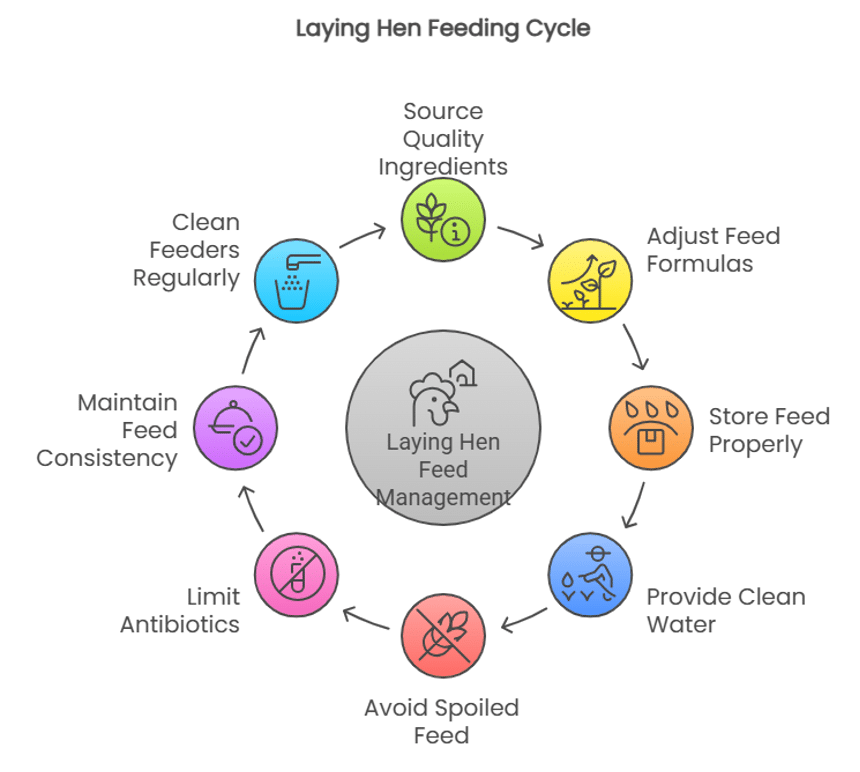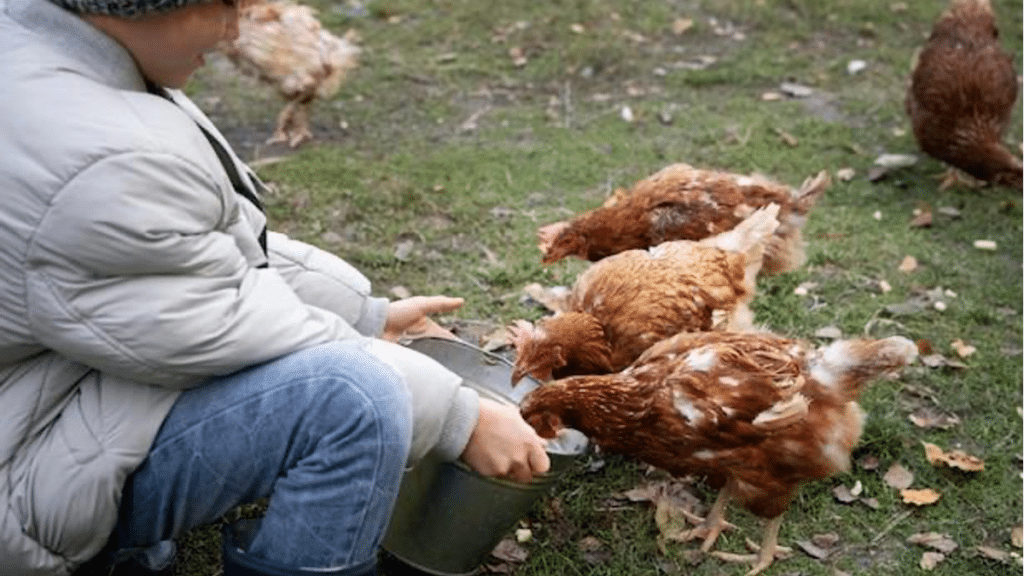The foundation of strong egg production and long-term hen health lies in the right nutrients. Without delivering proper nutrition consistently through well-formulated laying hen feed, even the best-managed flocks struggle to maintain high productivity or good health over time. That is why feed quality carries heavy weight in both daily operations and overall farm profitability. Apart from increasing the number of eggs, high-quality feed extends flock longevity, reduces medical costs, and leads to a more uniform and reliable output.
Let’s see what you should feed to laying hens and what mistakes you should avoid at any cost.
What to Feed Laying Hens: Key Nutritional Components
In order to formulate the right laying hen feed, you need a combination of some key nutrients such as proteins, calcium, phosphorus, and different vitamins that play important roles in making the feed healthy. For instance, proteins are vital for supporting muscle maintenance, feather development, and egg formation in hens. Calcium and phosphorus should also be provided in sufficient quantities to enable the production of strong eggshells and maintain skeletal integrity. Similarly, vitamins and trace minerals play an important role in metabolic processes and immune function.
In practical feeding programs, a typical laying hen feed includes a mix of grains like corn, wheat, or barley for energy, soybean meal for protein, and mineral and vitamin premixes to complete the diet. Some operations also add enzyme products, probiotics, and organic mineral sources to maximize nutrient availability and gut health.
Feeding Do’s: Best Practices for Nutrition and Health
So, what to feed laying hens? Here are the dos of the laying hen feed that will help you raise the best birds.
Use Clean, Fresh, and High-quality Ingredients
The quality of laying hen feed depends upon the quality of its components. Grains, protein meals, minerals, and supplements must be sourced from reputable suppliers and inspected regularly.
Adjust Feed Formulas Based on Production Phases
As hens progress from pullets to active layers, their nutritional demands evolve significantly. Early growth phases require higher levels of protein and energy to support skeletal and muscular development, while mature layers need elevated calcium to maintain shell quality.
Maintain Proper Feed Storage
Even the best feed loses its value if stored improperly. High humidity, fluctuating temperatures, and poor ventilation create conditions where molds thrive, and nutrient degradation accelerates. Feed should be kept in clean, dry, rodent-proof facilities, with strict first-in, first-out inventory practices to preserve freshness and prevent waste.
Ensure Constant Access to Clean Water
Hens need constant access to clean drinking water in order to lay good-quality eggs. Any interruption in water supply, or a decline in water quality, quickly leads to reduced feed consumption, dehydration, and drops in egg production.

Feeding Don’ts: Common Mistakes to Avoid
Small mistakes in feeding laying chickens can quickly escalate into serious problems for both flock health and egg production. Here are some important things you must avoid to get the best results from your flocks.
Use Spoiled or Contaminated Feed Materials
Laying hen feed that has developed mold, off-odors, discoloration, or moisture damage should never be given to hens. Contaminated feed can introduce mycotoxins and harmful bacteria, leading to poor health, reduced egg production, or even flock-wide outbreaks.
Overuse of Antibiotics or Growth Promoters
While medication may be necessary under veterinary supervision, routinely adding antibiotics to laying hen feed without any reason risks promoting antimicrobial resistance and can harm the natural gut flora of the birds.
Ignore Consistency between Feed Batches
Sudden changes in laying hen feed composition, ingredient quality, or processing can disrupt feed intake and production patterns. Always ensure new feed batches match the previous formulation as closely as possible, and introduce any necessary adjustments gradually.
Neglect Feeder and Equipment Cleanliness
Dirty feeders and drinkers become breeding grounds for bacteria, fungi, and pests. Regular cleaning routines help maintain feed hygiene, encourage steady intake, and protect the birds from unnecessary health risks.

FAMSUN’s Layer Feed Solution
As a global provider of integrated solutions for the laying hen feed and food industries, FAMSUN’s layer feed for chicken processing systems is designed around the idea that better feed creates healthier flocks and high-quality eggs.
With years of industry experience, FAMSUN focuses heavily on research related to layer performance, laying hen feed efficiency, intestinal health, and egg quality. Their integrated feed processing systems are built to deliver high-quality, safe, and nutritionally balanced layer chicken feeds while also promoting operational efficiency and environmental sustainability.
In addition to delivering hygienic and nutritious feed, FAMSUN’s engineering emphasizes smart facility management. Their systems incorporate intelligent material handling, energy-efficient designs, and automated packaging technologies that reduce waste, minimize feed loss, and enhance production speed.
Contact them to get more information about their layer feed solution!

